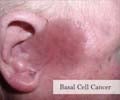The way in which the bacterium Helicobacter pylori navigates through the acidic stomach has been discovered by University of Oregon scientists.

Their report -- online ahead of regular publication July 3 in the journal Structure -- unveils the crystal structure of H. pylori's acid receptor TlpB. The receptor has an external protrusion, identified as a PAS domain, bound by a small molecule called urea and is poised to sense the external environment. TlpB is the first bacterial chemoreceptor of known function shown by crystallography to contain an extracellular PAS domain, the researchers reported.
"It is a beautiful structure, and this domain has never been seen before in this class of proteins," said co-author S. James Remington, professor of physics and member of the UO Institute of Molecular Biology. Captured at the atomic resolution of 1.38 angstroms, it is the first new, significant structural view in 20 years of the class of receptors used by bacteria to navigate their chemical environment.
H. pylori, a Gram-negative bacterium, was first identified in 1982 and shown to be associated with stomach ulcers and stomach cancer. While its mode of transmission is not precisely understood, the bacterium is found in the stomach of half of the people in the world, said co-author Karen Guillemin, professor of biology and also a member of the Institute of Molecular Biology. To fight H. pylori infections, patients generally are treated with broad-spectrum antibiotics, but the bacterium is becoming resistant and treatment fails in about 30 percent of cases.
As part of the new UO study -- led by postdoctoral researcher Emily G. Sweeney and doctoral student J. Nathan Henderson, now a postdoctoral researcher at Arizona State University -- researchers manipulated the atomic structure of the protein to disrupt its ability to bind urea, and demonstrated that the urea is the key to how the bacterium senses and avoids acid.
When the receptor is unable to bind urea, Guillemin said, the bacteria became confused and were unable to navigate away from high acid. "We found that this urea binding is absolutely crucial for this protein to act as an acid sensor," she said.
 MEDINDIA
MEDINDIA




 Email
Email





